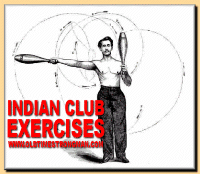 The US government, through the Centers for Disease Control, has an official opinion on how much exercise we need. Adults should get 30 minutes a day, five days of week, of moderate activity, such as brisk walking. This doesn’t need to happen in 30-minute segments. Ten minutes at a time is enough, as long as it adds up to 150 minutes in a week.
The US government, through the Centers for Disease Control, has an official opinion on how much exercise we need. Adults should get 30 minutes a day, five days of week, of moderate activity, such as brisk walking. This doesn’t need to happen in 30-minute segments. Ten minutes at a time is enough, as long as it adds up to 150 minutes in a week.
Does this seem too good to be true? Whatever happened to running, jogging, and aerobics with Jane Fonda? Is brisk walking really enough to make a difference in health and longevity?
Healthy people exercise ≠ exercise makes people healthy
It’s difficult to conduct scientific research on the health benefits of exercise. The ideal study would randomly assign infants into two groups. One group would exercise regularly throughout life and the other would play video games and wouldn’t even walk to school. (Hmmm. Maybe we’re already conducting that experiment.) After observing these two groups for a lifetime, one would ask which group was healthier and who lived the longest. Obviously, this isn’t practical. So … researchers end up comparing the health of people who choose to exercise with the health of those who prefer to relax on the couch.
There’s a fundamental flaw with this approach. Healthy people like to exercise and unhealthy people often don’t. Researchers can try to make statistical corrections to allow for differences between the two groups, but they can never be certain they’ve accounted for everything.
This problem arises in any observational study: you have no control over who is in each of the groups you’re comparing. There’s always the chance that you haven’t yet noticed something important. That’s what happened in the study of hormone replacement therapy (HRT) in post-menopausal women. At first glance, it appeared that women who took HRT were healthier than those who didn’t. It turned out that healthy women elected to take hormones. HRT actually increased health risks.
Fitness as fashion
 Physical fitness is a cultural fad that waxes and wanes over the years. In the 1920s, both men and women were enthusiastic about sports: tennis, swimming, track and field. They worked out with weights and Indian clubs. This ended abruptly with the Great Depression. Fitness, strength, and physical appearance seemed frivolous once grown men were selling apples on street corners.
Physical fitness is a cultural fad that waxes and wanes over the years. In the 1920s, both men and women were enthusiastic about sports: tennis, swimming, track and field. They worked out with weights and Indian clubs. This ended abruptly with the Great Depression. Fitness, strength, and physical appearance seemed frivolous once grown men were selling apples on street corners.
Following World War II, there was an effort to make children more physically fit, but it wasn’t entirely successful. By the sixties, it wasn’t cool to be muscular or competitive. Physical fitness was a low priority compared to music, sex, and recreational drugs. Medical schools taught that people over 40 shouldn’t exercise and that, if you’ve had a heart attack, you should avoid anything strenuous.
Then came the running craze. In the early 1960s, there were about 100,000 Americans who thought of themselves as runners. By the late seventies, there were more than 30 million. This was followed by a new cycle of fitness promotion: aerobics classes and videos, running shoes, personal trainers, and marathons.
All this exercising in the 1970s raised the question of how much is enough. Does vigorous exercise, such as running, prolong life?
Less is enough
Studies correlating health with amount of exercise began to appear in reputable medical journals by 1989. Like everyone else, the researchers had assumed that those who exercised most vigorously would be more physically fit and, it follows, would be healthier and live longer. The results were surprising.
Think of fitness as divided into five levels. At the bottom are those who are completely sedentary. They have a desk job and don’t even play golf. At the top you have the most fit. What researchers found was that the greatest improvement in health and longevity came from exercising just enough to move from the bottom-most sedentary group to the next notch up (the fourth quintile). This meant that moderate exercise, like that currently recommended by the CDC, promised more health benefits than strenuous exercise.
Exercise is for enjoyment
Ultimately the truth about exercise is that people do it because they enjoy it. It makes them feel good. Exercise is an indication that one is healthy more than it is the cause of good health. Forcing yourself to exercise may add hours or months to the end of your life. What’s more important is spending your life doing what you most enjoy.
“I believe that every human has a finite number of heart-beats. I don’t intend to waste any of mine running around doing exercises.” Buzz Aldrin
Related posts:
Why bike when you can trikke?
Image sources: The Daily Galaxy, Oldtime Strongman
Sources:
(Hover over book titles for more info. Links will open in a separate window or tab.)
Gina Kolata, Ultimate Fitness


Sorry, comments are closed for this post.